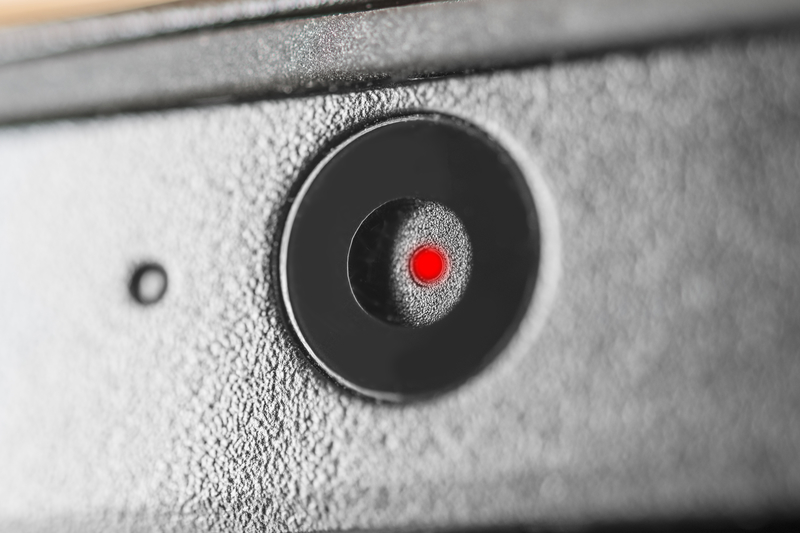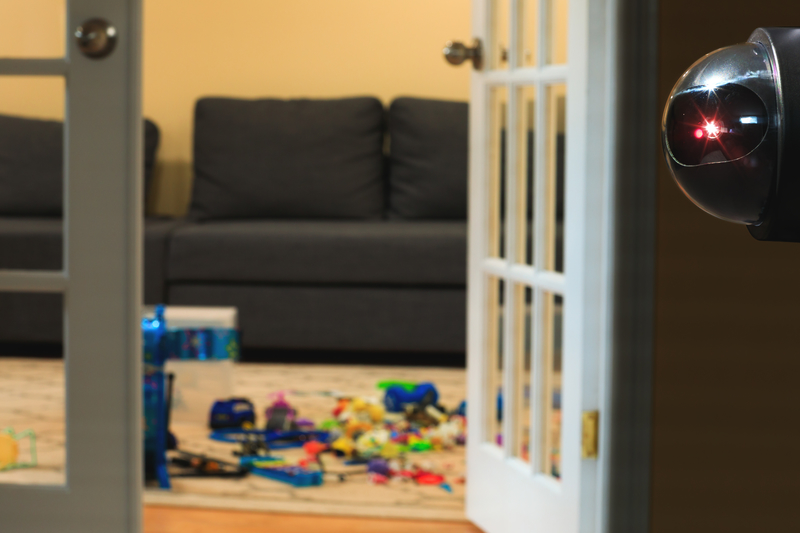How to detect hidden cameras in Vrbo, Airbnb and vacation rentals

You’re not paranoid — you are being watched. Facial-recognition cameras, store surveillance cameras, traffic cameras and more are all watching all the time.
Adding to the creep factor is the number of cases where cameras have been found in Vrbos, Airbnbs and other vacation rentals. Tap or click here for an Airbnb scam warning.
We can’t help you with cameras run by the government or retailers, but we do have tips on what you can do to make sure your vacation rentals are free of hidden cameras — or at least their presence is fully disclosed to you. Also, when is it OK for property owners to place surveillance cameras?
Tricks to finding hidden cameras in vacation rentals
Hidden cameras can usually be found in seemingly mundane devices such as wall outlets, smoke detectors, phone chargers and clock radios. But there are a number of other devices that can act as spy cams as well — clocks, picture frames, lamps and bathroom accessories, to name a few.
With that in mind, we offer these low-tech and high-tech ways to suss out hidden cameras. Tap or click here to learn more about hidden cameras.
Physically check the room
Do a complete sweep of the surroundings. This is the first order of business if you suspect a room is bugged. Ask yourself, where would a spy hide a camera or bugging device? Don’t just check for cameras; also look for microphone transmitters.
Search the room for unusual decor like out-of-place picture frames and random fixtures. Examine them for pinholes that may be used for a camera lens.
Check under chairs, tables, shelves and couches. These are all excellent hiding places for tiny microphones. Other hiding places could be books, stuffed toys or pillows.
Examine and trace wires that don’t seem to go anywhere. Although wireless surveillance gadgets are the norm now, wired devices are still in use.
Listen for strange sounds
Most motion-sensitive cameras emit low-noise clicks and buzzes when they’re operating. Prick up your ears and listen carefully for these almost inaudible sounds.
Motion-tracking cameras will often have little motors that hum when activated, so keep attuned to those sounds as well.
Turn off the lights

Turn off the room’s lights and check for small green or red LEDs. Night vision security cameras in particular use these kinds of lights and they normally blink or shine in low light.
With the lights off, you can also spot pinhole cameras by putting a tube over one of your eyes (like a telescope), while keeping your other eye closed. If something shines back while you’re sweeping a flashlight across the room, then there’s a good chance it’s a camera lens.
Use a laser pointer to scan rooms. What you’ll need to look out for is the lens reflection, which will shine when the laser hits the camera. If you see a reflection, that means it’s time to get a closer look. Tap or click here for ways to tell if you’re being spied on.
Wi-Fi network check

First, for basic IP security cams, you can connect to your rental’s Wi-Fi network. Then, scan it with software called Nmap. It’s a great network scanning tool for open ports, services and known devices, including web IP cameras.
Even though Nmap is meant for IT network administrators and professionals, you can use it for basic scans to search for certain security cameras. Tap or click here to learn how to install Nmap.
Use a signal detector
If you’re serious about privacy when you travel and rent accommodations, consider investing in a professional RF signal detector. These gadgets are small enough to take with you, and most of them are relatively cheap.
These detectors pick up RFID — or radio frequency identification. RFID uses radio waves to read, transmit and capture information stored on a tag that’s attached to an object. For our purposes, RFID can also be used to detect audio and video recording devices that transmit data over radio waves.
What to do if you find a camera
If the existence of indoor surveillance cameras was not disclosed to you by the renter, the answer is simple: Pick up the phone and call the police. Tell them you have direct evidence that someone is spying on you without your knowledge or permission, inside your rental. Use this exact phrase.
While you’re waiting for police to arrive, document the situation with video and photos on your smartphone. If you are traveling with others, ask them to be witnesses. Once you have your police report, contact the rental site.
If you’re looking for legal redress, you should know that states have different laws regarding audio and video recording. In some states, both parties have to agree to be recorded. Other states only require a one-party agreement. Always get legal advice before taking any action.
It is legal for landlords or property owners to place visible surveillance cameras in common areas. In apartment complexes, those common areas are easier to ascertain. But what if you are renting a home or an apartment through Airbnb or Vrbo? What is a common area?

A common area is a backyard, the front door area or a driveway. Guests’ reasonable expectations of privacy are not compromised in those areas and it can be argued the cameras in those locations keep people safe, as well as protect the homeowners and their property. Tap or click to see when having cameras came in handy.
Beyond that, according to a blog post from the law firm of Lamber Goodnow, there is quite of bit of gray area on what else constitutes a common area.
“Where privacy laws get sticky … is when a rental owner places a camera in the main living space of a vacation rental. … [A] rental home may be a large house where bedrooms are separate from main living areas. The owner of a rental house may argue that they have placed the camera in this area for security reasons to ensure that the renters do not damage or over-occupy the property.
“However, many renters on vacation may use the main living area as an extension of the bedroom and believe that they have a reasonable expectation of privacy.”
In many states, as long as the guest renting the place has been informed of the cameras, where they are all located and has consented to their presence, the cameras are allowed. That’s pretty much Airbnb’s and Vrbo’s policy in a nutshell.
How about cameras in bedrooms, bathrooms and changing rooms? Absolutely not ever — that’s a clear violation of privacy.
Airbnb and similar sites forbid hosts from using them in private spaces, including but not limited to bathrooms, bedrooms and other sleeping areas, like a fold-out couch in a family room.
We may receive a commission when you buy through our links, but our reporting and recommendations are always independent and objective.
Tags: accessories, Airbnb, Amazon, devices, family, Hidden cameras, home, laws, network, privacy, security, spy cams, surveillance cameras, tips and tricks, vacation rentals, Vrbo, Wi-Fi, Wi-Fi network
